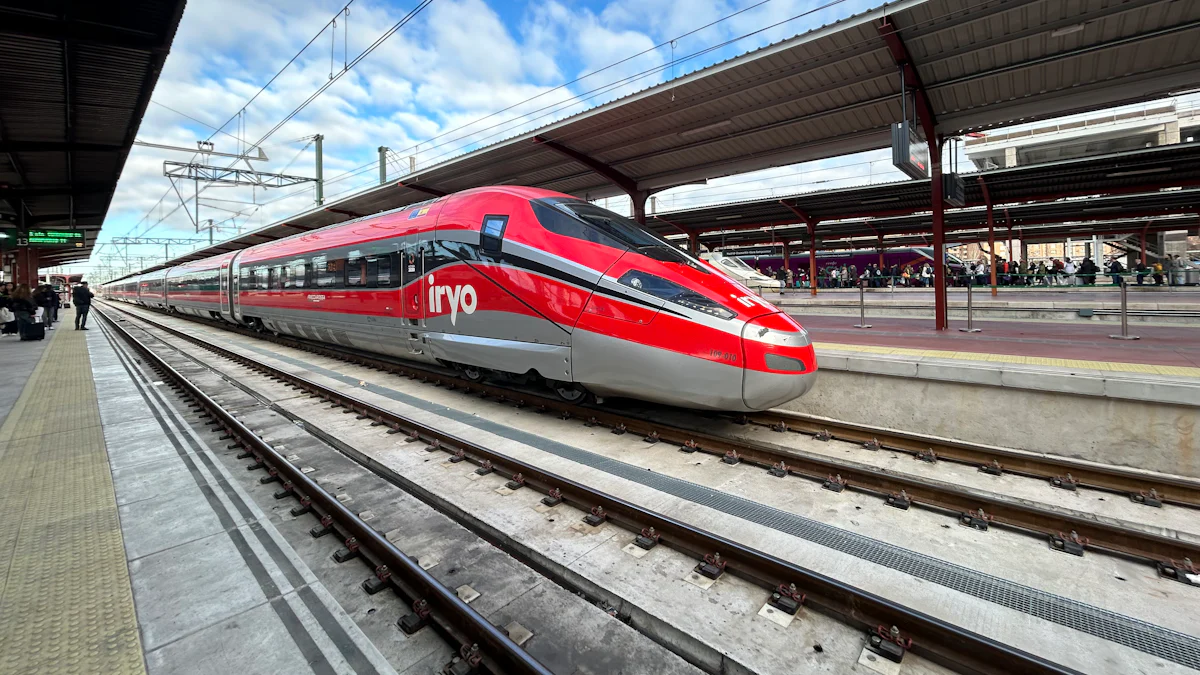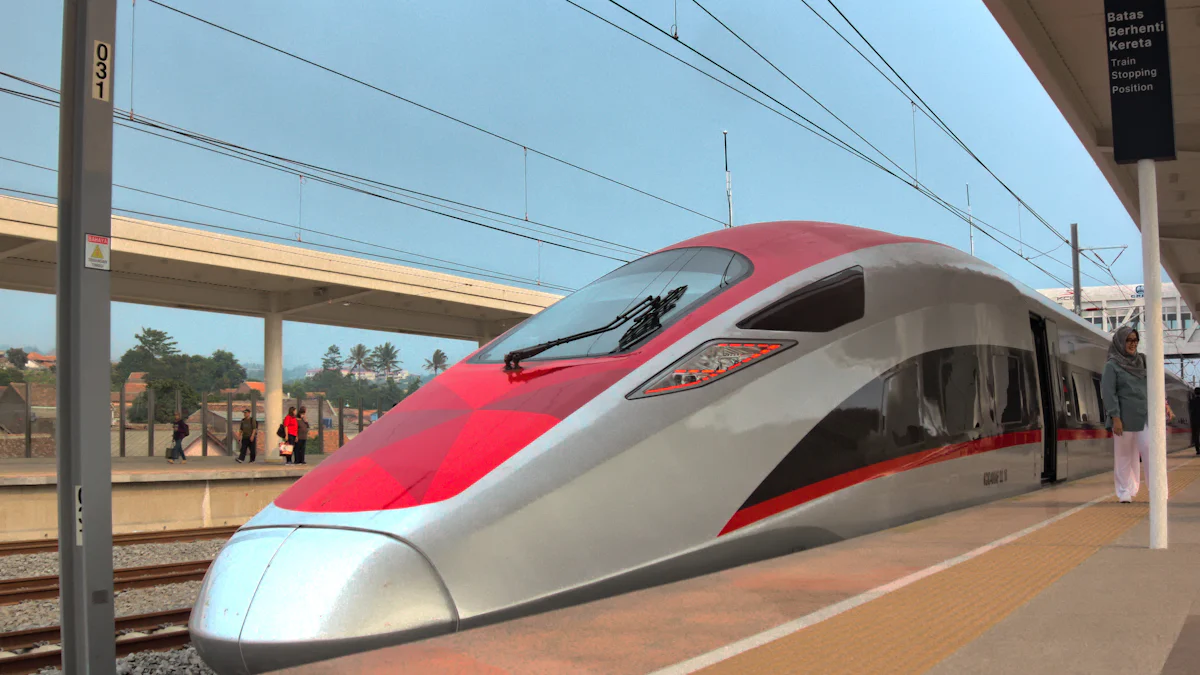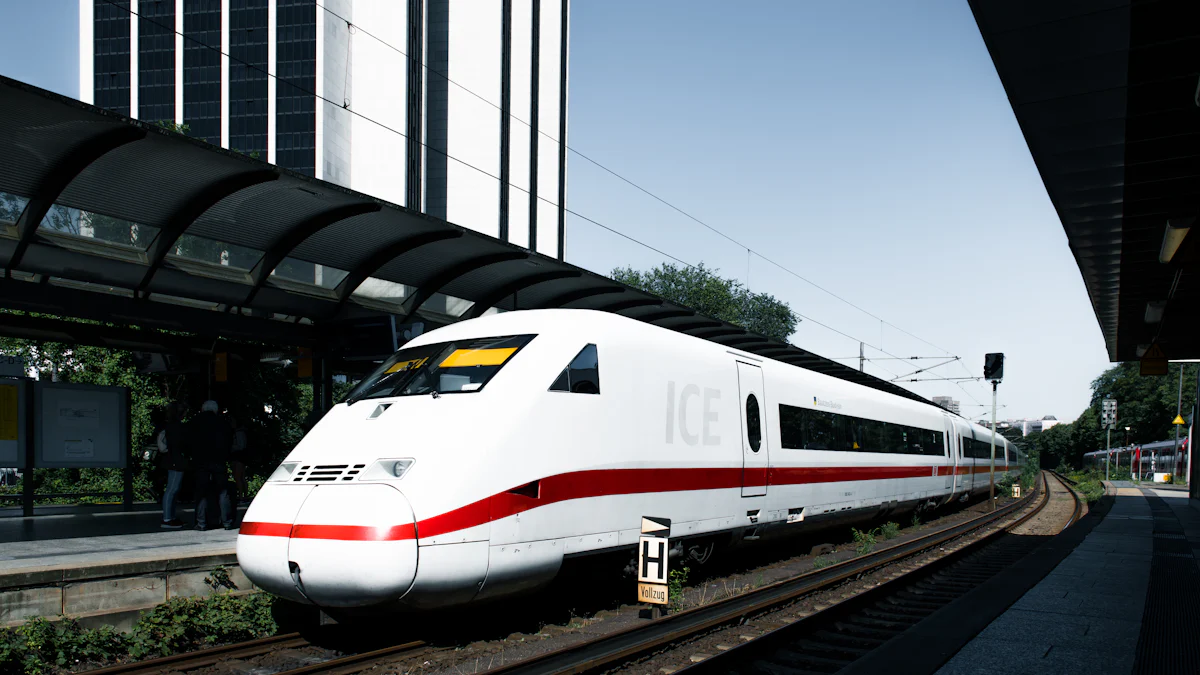2024 Rail Transport Forecast: Innovations from the China-Europe Railway

The Rail Transport Forecast for 2024 highlights the China-Europe Railway as a crucial component of international trade, linking 120 Chinese cities with 219 cities across 25 European countries. The upcoming innovations in rail transport aim to boost efficiency and sustainability. The evolving global transport landscape necessitates these advancements to address rising trade volumes and environmental considerations. To stay competitive and sustainable, the railway sector must embrace cutting-edge technologies.
Rail Transport Forecast: Technological Advancements

Enhanced Monitoring and Tracking
Real-Time Monitoring Systems
The China-Europe Railway will implement advanced real-time monitoring systems. These systems will track temperature, humidity, air pressure, brightness, and acceleration. This comprehensive monitoring will ensure the safe transport of goods. The data collected will enable quick responses to any anomalies. Digital solutions in railway safety monitoring will play a crucial role in this process. The integration of these systems will enhance the overall reliability of rail transport.
Safety and Efficiency Improvements
Safety improvements will be a key focus for the China-Europe Railway. RailTEC's research has developed statistical models to estimate accident probabilities. These models will help prioritize resources for maximum safety improvement. The railway will also adopt derailment prevention strategies. Empowered by technology and data insights, the railway will maintain a holistic approach to safety. This approach includes modernizing infrastructure and equipment. Rigorously training employees will further enhance safety measures.
Fast Customs Clearance
Streamlined Processes
The implementation of fast customs clearance will streamline processes. This innovation will reduce delays at border crossings. Efficient customs procedures will facilitate smoother trade flows. The railway will leverage strategic partnerships to maintain stable capacity. Close government relations will support these streamlined processes. The goal is to minimize waiting times and expedite cargo movement.
Efficiency Gains
Efficiency gains will result from the adoption of fast customs clearance. The China-Europe Railway will benefit from reduced transit times. This improvement will enhance the competitiveness of rail transport. The railway will offer comprehensive service offerings, including full container and less-than-container load (LCL) services. Temperature-controlled containers will ensure the safe transport of perishable goods. These innovations will contribute to the overall efficiency of the rail network.
Rail Transport Forecast: Environmental Innovations

Green Transportation
Energy-Saving Practices
The China-Europe Railway will adopt energy-saving practices to enhance environmental sustainability. Rail transport operates with fuel efficiency up to four times higher than road-based heavy goods vehicles (HGVs) on a ton-mile basis. This efficiency reduces overall energy consumption. The railway will utilize advanced locomotive technologies to further improve fuel efficiency. Electrification of the rail network will play a significant role in minimizing energy use. These practices will contribute to a more sustainable transport system.
Emission Reduction Strategies
Emission reduction strategies will be a priority for the China-Europe Railway. Rail transport is one of the most energy-efficient transport modes globally. The railway will focus on reducing carbon emissions through innovative solutions. Alternative fuels and sustainable infrastructure practices will be implemented. Collaborative efforts will promote cleaner air along rail corridors. These strategies will align with global sustainability goals.
Sustainable Practices
Waste Reduction
The China-Europe Railway will emphasize waste reduction as part of its sustainable practices. Efficient resource management will minimize waste generation. Recycling and reusing materials will be integral to operations. The railway will implement waste reduction initiatives across all levels. These efforts will support a circular economy. Sustainable practices will enhance the environmental footprint of rail transport.
Carbon Footprint Minimization
Minimizing the carbon footprint will be a key focus for the China-Europe Railway. Rail transport provides an energy-efficient way of transport that reduces carbon emissions. The railway will adopt measures to lower its overall carbon footprint. Strategic partnerships will support these initiatives. Continuous optimization of rail infrastructure will further reduce emissions. These efforts will make the railway a leader in sustainable transport.
Rail Transport Forecast: Economic and Social Impacts
Economic Growth
Trade Facilitation
The China-Europe Railway has significantly reduced transit times for goods transportation. The railway has cut lead times by 10–15 days compared to maritime shipping. This reduction has facilitated the shipment of time-sensitive items. The railway has expanded the range of goods transported, promoting economic integration between China and Europe. The efficient rail network has strengthened trade resilience, ensuring a steady flow of goods even during global disruptions.
The railway has also contributed to reducing transportation costs. Lower costs have made rail transport an attractive option for businesses. The economic benefits extend to both continents, enhancing the overall trade volume. The China-Europe Railway has become a vital link in the global supply chain, supporting sustainable economic growth.
Job Creation
The expansion of the China-Europe Railway has created numerous job opportunities. The development of rail infrastructure has required skilled labor. Maintenance and operation of the railway have provided steady employment for many workers. The railway has also spurred job creation in related industries, such as logistics and warehousing.
The economic growth driven by the railway has had a positive impact on local communities. Increased trade activities have led to the establishment of new businesses. These businesses have further contributed to job creation. The railway has played a crucial role in promoting high-quality economic development.
Social Benefits
Connectivity Improvements
The China-Europe Railway has improved connectivity between regions. The extensive rail network has linked 120 Chinese cities with 219 cities across 25 European countries. This connectivity has facilitated easier movement of goods and people. The railway has enhanced access to markets, benefiting businesses and consumers alike.
Improved connectivity has also promoted cultural exchange. People from different regions have had more opportunities to interact. The railway has fostered a sense of global community. Enhanced connectivity has made travel more convenient, encouraging tourism and international collaboration.
Regional Development
The China-Europe Railway has played a significant role in regional development. The railway has connected remote areas with major economic hubs. This connection has stimulated economic activities in less developed regions. The railway has provided these regions with access to larger markets, boosting local economies.
Regional development has also benefited from improved infrastructure. The construction of new routes has enhanced the overall transportation network. Better infrastructure has attracted investments, leading to further economic growth. The China-Europe Railway has contributed to balanced regional development, reducing economic disparities.
Rail Transport Forecast: Future Prospects
Long-Term Vision
Expansion Plans
The China-Europe Railway aims to expand its network significantly. The railway plans to connect more cities across Eurasia. This expansion will enhance trade routes and improve connectivity. The goal is to reach new markets and increase cargo volume. The railway will develop new routes to bypass congested areas. This strategy will reduce transit times and improve efficiency.
Strategic partnerships with other rail networks will support this expansion. These partnerships will ensure seamless integration of services. The railway will also invest in infrastructure development. New terminals and logistics hubs will be constructed. These facilities will handle increased cargo volumes efficiently. The expansion plans will strengthen the railway's position in global trade.
Technological Roadmap
The China-Europe Railway has a clear technological roadmap. The focus will be on adopting cutting-edge technologies. Advanced monitoring systems will be further developed. These systems will enhance safety and efficiency. The railway will also invest in automation. Automated systems will streamline operations and reduce human error.
Digital platforms will be integrated into the railway's operations. These platforms will provide real-time data and analytics. The data will help in making informed decisions. The railway will also explore the use of artificial intelligence. AI will optimize routing and scheduling. This optimization will improve overall service quality.
Challenges and Opportunities
Potential Obstacles
The China-Europe Railway faces several potential obstacles. Geopolitical tensions could impact operations. Trade policies and regulations may pose challenges. The railway must navigate these complexities carefully. Infrastructure limitations could also hinder growth. Some regions may lack the necessary facilities. Investment in infrastructure will be crucial to overcome this.
Environmental concerns may present another challenge. The railway must adhere to strict environmental regulations. Meeting these standards will require significant investment. The railway will need to balance growth with sustainability. Addressing these obstacles will be essential for future success.
Strategic Opportunities
The China-Europe Railway has numerous strategic opportunities. The growing demand for sustainable transport presents a major opportunity. Rail transport is more environmentally friendly than other modes. This advantage can be leveraged to attract more customers. The railway can also capitalize on technological advancements. Innovations in rail technology will enhance service quality.
Expanding trade between China and Europe offers another opportunity. The railway can facilitate this trade efficiently. The Belt and Road Initiative will further boost rail transport. This initiative aims to improve connectivity between Asia and Europe. The China-Europe Railway can play a key role in this project. Strategic opportunities will drive the railway's future growth.
The China-Europe Railway will introduce several key innovations in 2024. Enhanced monitoring systems will ensure safe and efficient transport. Fast customs clearance will streamline processes, reducing delays. Green transportation practices will improve fuel efficiency and reduce emissions.
These advancements will significantly impact global rail transport. Increased efficiency and sustainability will make rail a more competitive option. The railway will play a crucial role in global connectivity, linking numerous cities across continents.
The future of the China-Europe Railway looks promising. Expansion plans and technological roadmaps will drive growth. Strategic opportunities will enhance its position in international trade.
See Also
Revealing Sea Freight Innovations: What's Next in 2024?
Ready for the Future? Discovering the Latest in Supply Chain Tech
Ready for the Transport Tech Revolution Ahead?
